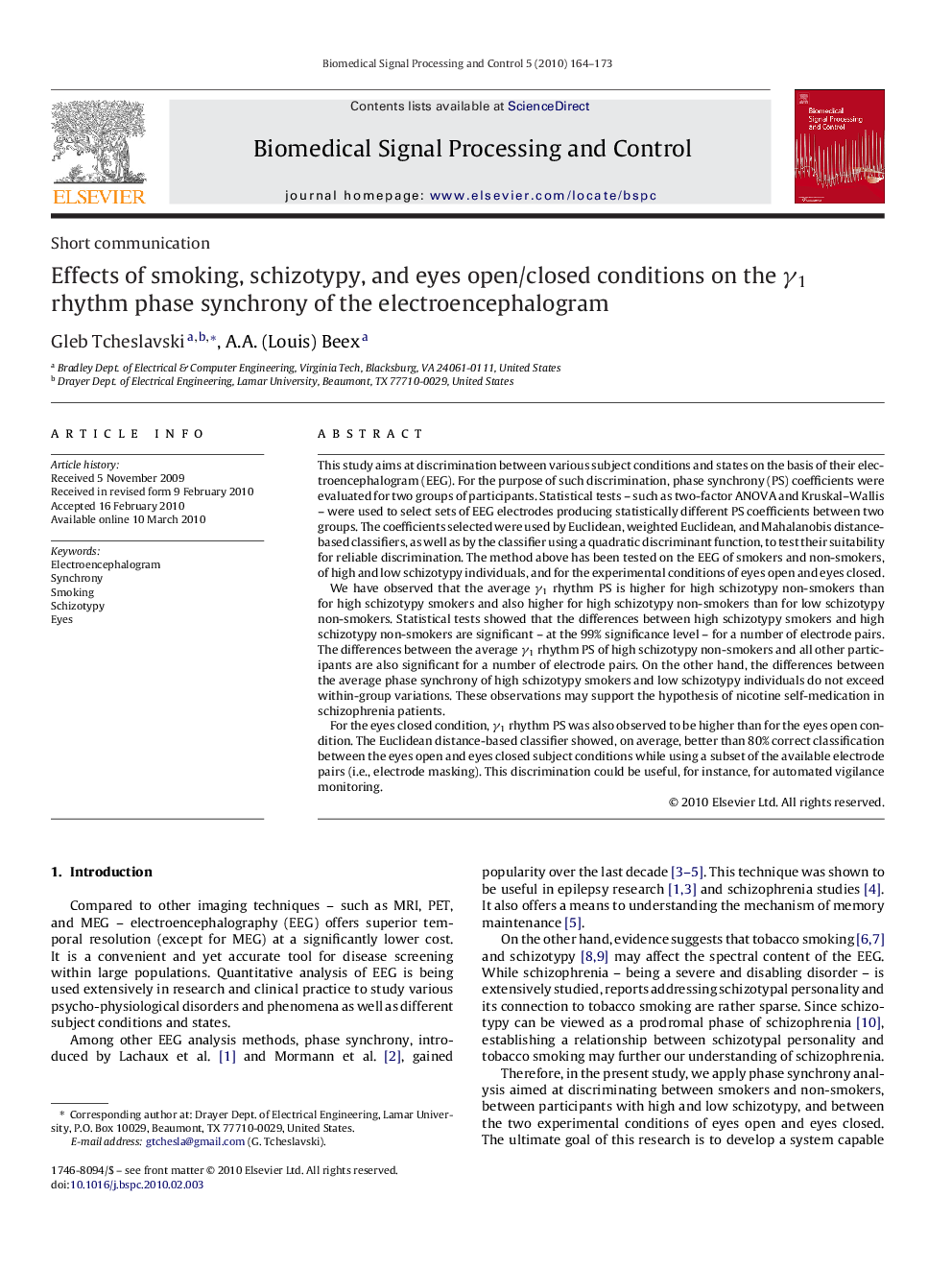| Article ID | Journal | Published Year | Pages | File Type |
|---|---|---|---|---|
| 557655 | Biomedical Signal Processing and Control | 2010 | 10 Pages |
This study aims at discrimination between various subject conditions and states on the basis of their electroencephalogram (EEG). For the purpose of such discrimination, phase synchrony (PS) coefficients were evaluated for two groups of participants. Statistical tests – such as two-factor ANOVA and Kruskal–Wallis – were used to select sets of EEG electrodes producing statistically different PS coefficients between two groups. The coefficients selected were used by Euclidean, weighted Euclidean, and Mahalanobis distance-based classifiers, as well as by the classifier using a quadratic discriminant function, to test their suitability for reliable discrimination. The method above has been tested on the EEG of smokers and non-smokers, of high and low schizotypy individuals, and for the experimental conditions of eyes open and eyes closed.We have observed that the average γ1 rhythm PS is higher for high schizotypy non-smokers than for high schizotypy smokers and also higher for high schizotypy non-smokers than for low schizotypy non-smokers. Statistical tests showed that the differences between high schizotypy smokers and high schizotypy non-smokers are significant – at the 99% significance level – for a number of electrode pairs. The differences between the average γ1 rhythm PS of high schizotypy non-smokers and all other participants are also significant for a number of electrode pairs. On the other hand, the differences between the average phase synchrony of high schizotypy smokers and low schizotypy individuals do not exceed within-group variations. These observations may support the hypothesis of nicotine self-medication in schizophrenia patients.For the eyes closed condition, γ1 rhythm PS was also observed to be higher than for the eyes open condition. The Euclidean distance-based classifier showed, on average, better than 80% correct classification between the eyes open and eyes closed subject conditions while using a subset of the available electrode pairs (i.e., electrode masking). This discrimination could be useful, for instance, for automated vigilance monitoring.
